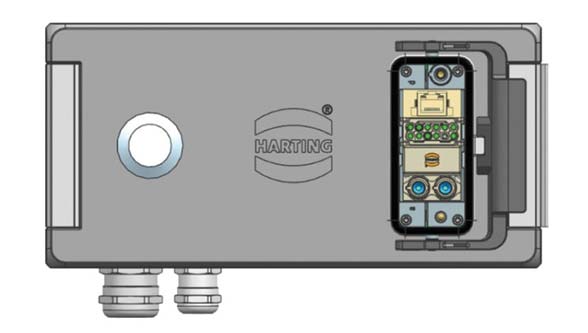A modified, DC-based network infrastructure can support both the energy transition by increasing the efficiency of power distribution, as well as by better responding to the specific energy needs of Industrie 4.0.
Electric motors in the industrial sector are often equipped with frequency converters for continuously variable rotation speed control. Speed-adjusted drives help optimise manufacturing process and energy usage. Frequency converters typically feature an integrated rectifier with line filter, which always requires a lossy conversion of electrical energy from AC to DC voltage. It therefore makes sense to make the DC link the actual infrastructure connection and to declare it the Power DC lifeline of industry. As a result of increased use of renewable energies and the storage of energy in rechargeable batteries, more and more DC voltage is being added to the production grid. Hence, from this perspective as well it makes sense to rely on a DC grid infrastructure in the future. If the frequency inverter is supplied with DC voltage via a DC direct feed, additional decentralised conversion is no longer necessary. This reduces potential transformer losses, since rectifying AC in a central converter is more efficient than rectifying in many decentralised units. Potential conversion losses are significantly lower, as can quickly be seen from the diagram in Figure 1. Here, DC motors and other DC system components are supplied with DC voltage. However, DC networks pose completely new challenges for the connectors that are deployed, since 800V DC voltage behaves significantly differently from the well known 400 Volt AC voltage. Accidentally unplugging a connector under load creates an arc that in turn creates significant hazard potential for the user. Although disengaging under load was also not allowed with 400 VAC connectors, the risk potential was significantly lower due to rapid arc extinguishing at AC voltage. But it is not only the safety requirements that lead to a rethinking of this interface. The use of connectors in DC infrastructure is accompanied by the goal to grow systems and their supply infrastructure together into a flexible unit. From the operator’s perspective, the ability to quickly reconfigure equipment for new products is crucial: the smoother the change-out, the more efficient the system.
This trend fits in with the context of convertible systems, the Smart Factories of Industry 4.0. Thus, two major mega-trends come together here: the Smart Factory trend and the trend towards the Smart Grid.But
what prerequisites does the connector need to bring along which enable a DC system component to be reconfigured while also offering users additional value?
- Personal protection: unintentional unplugging of a connector in a DC industrial setup must be avoided.
- Protection for connectors: under EN 61 984, disengaging under load is not permitted for connectors since it poses risks for the user and damages the contact surface.
- Equipment protection: disengaging under load leads to an undefined system standstill that can destroy the workpiece, the machine and/or the entire system. Protection for persons and system/equipment can only be achieved by actively locking the connector and thus preventing unintentional or improper disengagement. The Industrial Power Outlet DC accesses sensor data on the operating state and
virtually rules out human error. One advantage offered by this is that even non-specialists can plug in equipment modules. Corresponding electromechanical precautions ensure that plugging and unplugging are no problem for the operator and the system or equipment. The Han-Smart Industrial Power Outlet DC meets all these requirements. It represents a universal interface for the transmission of power, data and signals. Additionally integrated is an option for locking under load, a step that protects both operator and equipment. As a result, the module interface becomes a smart I4.0 component. The basic version of the Industrial Power Outlet features sensor-based evaluation that checks whether the requirements in IEC 61984 are met. The connector is only released when the contacts are voltage and current-free. The “Enhanced” version is also equipped with a comprehensive sensor system. This allows the box to collect metrics data needed for predictive maintenance and make the “Smart Factory” available. The condition of the equipment upstream to the Box is continuously monitored, which reduces downtime.
Network structure for dc voltage – supply with energy stabilisation

For more information
www.harting.com



